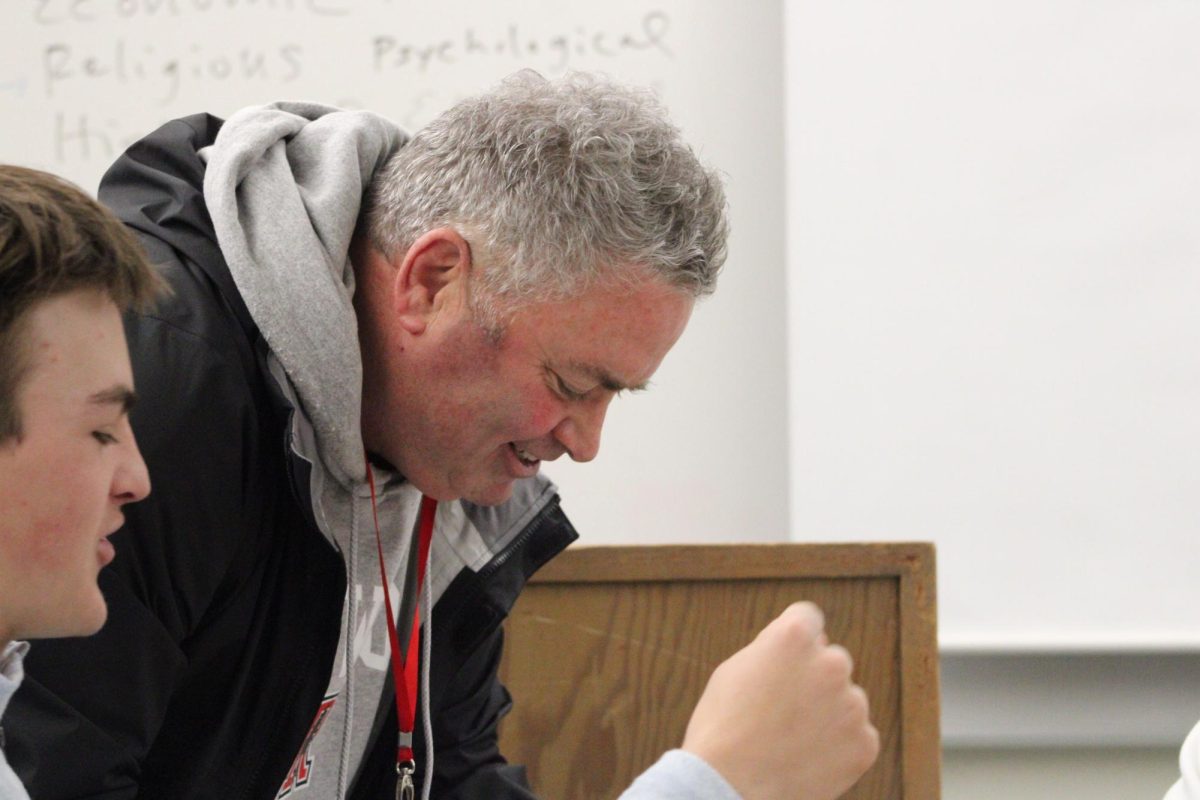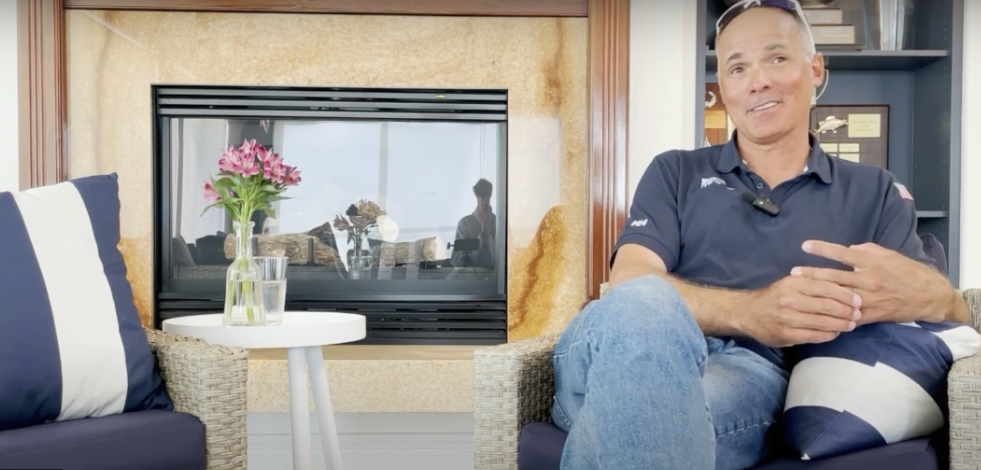“Acting hypocritic when you should be hippocratic”
By, Annie Forsman
Malpractice
“Hey Nana Mimi, it’s Jase. I love you… I am really going to miss you,” said Jason Seavey to his coma-stricken grandmother, seconds before hanging up the phone in disbelief. At 10 years old, Seavey did not know what to make of the experience, let alone the thought of death itself.
Minutes prior to the phone conversation with his ailing and unconscious grandmother, he had been playing video games at his friend’s house. However, after the unforeseen final conversation with his grandmother, Seavey’s innocence was shaken.
It was not until a few years ago that his father explained to him the full truth behind his grandma’s passing. Seavey, a senior, said he always thought of his grandmother’s death as a sickness induced by cancer or old age. Nana Mimi, or Mary Seavey, had a life cut short in the fall of 2008 due to malpractice.
Medical malpractice occurs when a health care provider engages in professional negligence, meaning that they perform a procedure in a medical facility that is below the accepted standards of practice, causing in most cases medical error, such as death or injury.
This could mean a doctor uses unsanitized tools during a procedure, leading to the patient contracting an infection, or a doctor could act hastily and fail to engage in thorough pre-surgery steps, resulting in a mistake during the procedure that causes serious injury or permanent damage to the patient.
“The doctor made a mistake. On one level it was just a human mistake that cost the life of my grandmother,” Seavey said. “On the other hand, what if there had been a failsafe or some sort of structure put in place to ensure that things like that do not happen?”
Seavey said the malpractice was due to a lack of communication between doctors regarding a missing medication. His grandmother’s doctor neglected to cross reference with her medical history to find out what medications she was on, so the procedure put her body into shock.
Physician Rebecca Shunk, a Redwood parent and Associate Chief of Staff for Education at the San Francisco VA Medical Center, educates medical professionals on how to reduce common medical errors that lead to an estimated 100,000 deaths and severe injuries annually.
According to Shunk, medical errors can be avoided by implementing basic, fundamental communication techniques and training between teams of doctors, similar to the communication norms seen within fast food companies.
“When they ask at In-N-Out Burger what you would like and you tell them what you want, they read it back to you,” Shunk said. “We need to implement those same things in health care. It seems really silly, since as a health care consumer you may assume it’s happening. Unfortunately that kind of training is not that commonly implemented.”
After discovering the truth behind his grandmother’s death, Seavey composed a slam poem about his take on the health care system for the Tri-School Poetry Slam Competition last spring, where he received overwhelming applause and numerous standing ovations.
Seavey’s new understanding of the events leading to his grandmother’s death brought him face to face with the controversial issues surrounding modern health care.
Unions
Another reason why Seavey became interested in health care reform was the influence of his uncle, Fred Seavey, who holds a leadership position at the National Union of Healthcare Workers (NUHW) as the Research Director and Executive Board Secretary-Treasurer.
“What [Fred] is doing is representing janitors in hospitals, or nurse practitioners, the people you don’t think about in hospitals, who are still there,” Seavey said. “Often times because of the way health care is set up and because of the relationships between big time unions and health care corporations, those people often get left behind.”
On Friday, Aug. 21, Seavey performed his slam again at the second day of a strike at the San Rafael Healthcare and Wellness Center, by request of his uncle.
“My experience [with the health care system] is something that is very personal to me,” Seavey said. “Obviously malpractice is in a different category than the mistreatment of health care workers or health care unions, but for me it is just one more reason to look deeper and get to know other people’s stories.”
Several red and white NUHW signs bobbed in the hands of protesters, containing thick black wording, such as, “Enough Greed,” “Pay Us What We Are Worth,” and “Standing Up For Our Patients and For Our Jobs.”
The two-day event consisted of 60 NUHW workers, community leaders, and caregivers striking against the facility’s owner, Bruis Healthcare Service, which operates more than 80 nursing homes in the country. Workers were rallying against poor conditions, decreasing patient care, and extreme understaffing in the local nursing facility, which was given a one-star ranking out of five from Medicare, according to NUHW.
[vimeo id=”https://vimeo.com/142692613″ align=”left”]
“I think my poem related to [the workers’] struggles in that it was critical of the massive injustices that occur throughout modern health care,” Seavey said. “It wasn’t as much something where I was pointing fingers as much as it was trying to represent all the people who get left behind, the complaints that go unanswered, and all the hurt that goes ignored.”
Furthermore, Seavey said that the strike was primarily rooted in the fact that employees had been working without a contract for about 18 months, due to the recent switch of workers from Service Employees International Union (SEIU) to NUHW, the rival union.
“Since the leadership has changed, there has been horrible, horrible miscare. At times the patient to nurse ratio will be 49 to one, and there has been a steep rise in bedsores and other issues rising out of neglect,” Seavey said. “Basically, all these cost-cutting measures are having a real human effect, which isn’t fair and isn’t representative of the care they deserve.”
After interning this summer for several weeks at Schneider Wallace, a national law firm that protects low-wage workers, Seavey said he began to recognize how unions have power to enact change for health care workers.
According to Seavey, one wage worker may not have the funds or the courage to hire a lawyer and go after big health care companies, such as the ones listed in his poem’s line, “Rounding back to rubbing alcohol, which heals through pain, I think Kaiser, Cigna, Aetna, United Health, Blue Shield, and Humana should take a dose to clear their name.”
In a union, however, an assembly of people can possess considerable influence due to the quantity of their voices and arguments, that can eventually lead to social change.
Senior Stevie Becker thinks that the current health care system has a “mind boggling” level of inefficiency that has resulted in health care workers with insufficient salaries and pensions, as well as patients with poor quality health coverage and care.
“I think [the inefficiency] is due to classic crony capitalism, where because of the private nature of the system, the big health care companies and the big health care insurance companies are able to work together. The end result is that the pensions of the workers are reduced and the consumer gets a worse product,” Becker said.
Government
Senior Erik Renner, Seavey’s classmate, explained that many of the issues in today’s health care system are due to misplaced incentives in businesses. For instance, due to the Affordable Care Act, signed by President Obama in 2010, businesses with more than 50 full time employees must offer qualified and affordable health benefits or pay a tax penalty. This new act has placed an incentive on smaller marginal businesses to keep their staff smaller than 50 or use mainly part time employees, Renner said.
“There should be measures taken to make sure there are not as many loopholes [in the health care system reform], or that the incentives are rightly placed, so that we gain the most out of what we are doing,” Renner said. “We just need to make our health care system more efficient and make it cost less.”
[vimeo id=”https://vimeo.com/142695129″ align=”right”]
Seavey said that the entire structure of the current health care system is so convoluted that reform in any direction would be positive.
Seavey alludes to this notion in his poem when he states, “I think those health care providers should take a dose of germicide, since their issue have become an infection, grade A certified. Though that rub in the right direction may hurt their bottom line, I believe change in any way, nationalized or laissez, would benefit the generation after yours and mine.”
In this line he is looking forward to the future of health care reform. Almost everyone involved wants the same thing: the best care for the most people. However, according to Seavey, liberals and conservatives cannot seem to agree on the ultimate form of the solution.
Seavey believes that instead of turning this issue into a controversial conflict between two parties, people should take a utilitarian approach.
Similarly, Becker said that he began to really think about health care reform after hearing Seavey’s slam poem last spring.
“It’s just sort of this general picture I have of a young 20 something or a homeless person or a retired person who just has no access to the health care they need. Not just need in sort of a soft sense, but it is vital to their very survival,” Becker said. “I think that [health care] is something that should be guaranteed and procured for every citizen.”
Brighter Future
Shunk believes that the government is already making great progress in realigning incentives for health care businesses so that they deliver the best care to the most people. For instance, Shunk said that the Affordable Care Act was a good step toward giving everyone the opportunity to receive health care in America.
In her own practice, Shunk said the adoption of the new regulations has helped the San Francisco VA Medical Center transition into a more cohesive and effective facility.
[vimeo id=”https://vimeo.com/142693377″ align=”left”]
“I think Congress, rightfully so, realized that there’s no way that we get everyone in America insurance, or that we could actually afford to take care of all those people in our prior model, where a physician, solo practitioner would take care of patients,” Shunk said. “They have really tried to fund, implement, and expand a team-based model of care.”
The Patient-Centered Medical Home model, a provision of the Affordable Care Act, reinforces proactive and personal care between the patient and health care workers, Shunk said.
With more funds and a more efficient system, doctors can receive assistance from registered nurses and medical support assistants. These health care workers can then connect doctors to more health care workers, such as psychologists and pharmacists, who can provide immediate care for the patient, Shunk said.
“We have moved from a model of waiting for the patient to show up to a model of proactive care,” Shunk said. “I work with a team of pharmacists and nurses to take really good care of those patients.”
Shunk said many health care facilities currently have outdated methods of getting funding. Newer systems, however, are in use at Kaiser, the VA, and many other organizations.
“As providers we are able to get paid to do those really great alternative visits. For example, I can call a patient and get revenue for that. Currently, in the Free-For-Service model, where most people go, doctors and nurse practitioners don’t get paid if they make a phone call to a patient,” Shunk said.
According to Seavey, students should get involved in health care because it’s a local, national, and global issue.
“You could go over to the inner-city and help make sure that homeless people are getting the care they need, or you could go up to San Rafael and participate in a nursing home strike,” Seavey said. “It crosses boundaries. You can really be involved in health care reform no matter where you are.”



















